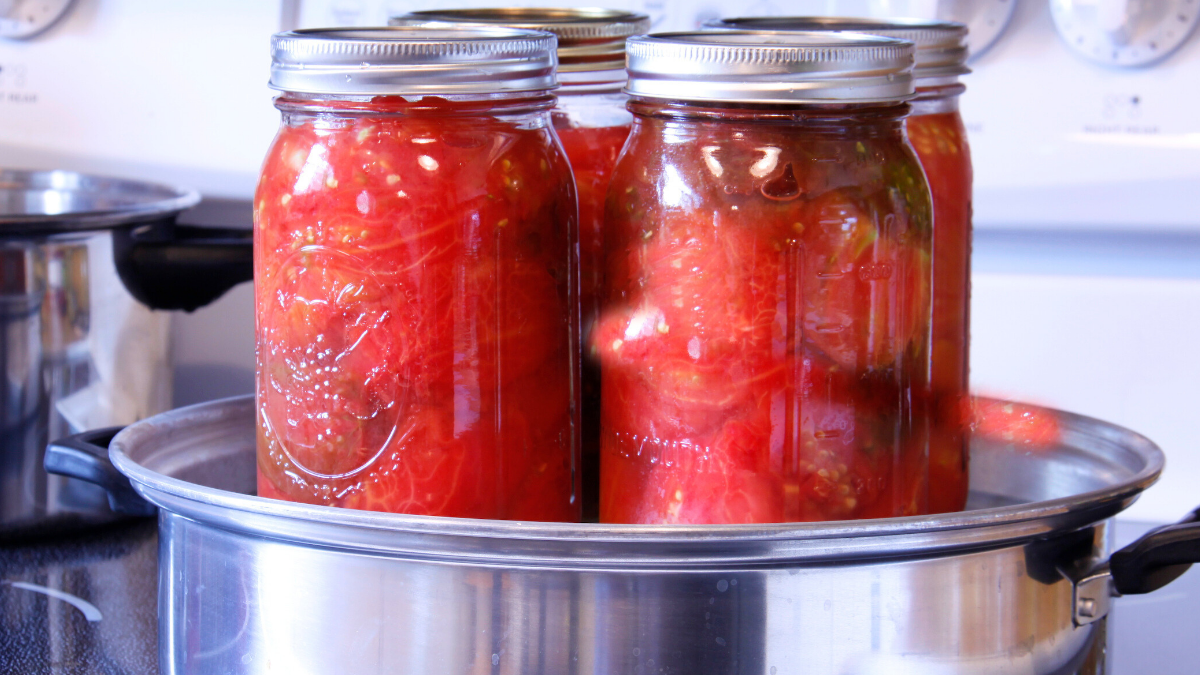What Is Canning & Basic Canning Methods

Canning is a method of food preservation that involves sealing food in airtight containers to extend its shelf life. This process was first developed in the early 19th century as a way to supply safe and long-lasting food for armies and sailors. Today, canning remains a popular way to preserve fruits, vegetables, meats, and other perishable items for home use.
The key principle behind canning is to heat the food to a temperature that destroys microorganisms and enzymes that cause spoilage. Once heated, the food is sealed in jars or cans to prevent contamination by air or bacteria. Properly canned foods can last for months or even years, retaining their flavor, nutritional value, and texture.
Home canning offers several benefits. It allows individuals to preserve seasonal produce, reduce food waste, and enjoy the convenience of ready-to-eat meals. Additionally, canning can be a cost-effective way to stock up on pantry staples while maintaining control over ingredients, such as sugar and salt levels, which is particularly important for those with dietary restrictions.
Basic Canning Methods
There are two primary methods of home canning: water bath canning and pressure canning. Each method is suited for different types of foods based on their acidity levels.
Water Bath Canning
Water bath canning is the simpler of the two methods and is typically used for high-acid foods. These include fruits, jams, jellies, pickles, and tomatoes with added acid (like lemon juice or vinegar). The process involves submerging jars of food in boiling water for a specified amount of time. The high heat destroys bacteria, yeasts, and molds, while the airtight seal prevents further contamination.
Pressure Canning
Pressure canning is used for low-acid foods, such as vegetables, meats, poultry, and seafood. These foods require higher temperatures to eliminate harmful bacteria, such as Clostridium botulinum, which can thrive in low-acid environments. Pressure canners create a pressurized environment that raises the boiling point of water, ensuring food is safely processed. Although the equipment and process can seem intimidating, following guidelines precisely ensures safe results.
General Canning Tips
Regardless of the method, success in canning depends on proper preparation. Use clean jars and lids from https://forjars.co/, fresh produce, and follow tested recipes from reliable sources. Ensure jars are sealed properly by checking the lid’s vacuum seal after processing. If a lid pops when pressed, the jar did not seal correctly and should not be stored.
Which Products Are Best Suited for Home Canning
Not all foods are ideal for home canning. Here are some of the best options:
High-Acid Foods
Fruits like peaches, apples, cherries, and berries are excellent candidates for water bath canning. These fruits can be preserved as sauces, pie fillings, or whole in syrup. Tomatoes, with added acid, are another favorite for canning, often used to make sauces, salsas, and soups.
Low-Acid Foods
Vegetables such as green beans, carrots, and corn, as well as meats like chicken, beef, and pork, are ideal for pressure canning. These foods maintain their quality well and provide convenient options for meals.
Pickled Products
Pickles, relishes, and chutneys are popular because their vinegar content naturally raises acidity, making them safe for water bath canning. Cucumbers, beets, and onions are commonly used in pickling.
Specialty Items
Homemade jams, jellies, and fruit butters are beloved for their taste and versatility. Additionally, broths and soups (without added thickeners) can be pressure-canned for convenience.
Foods to Avoid
Certain foods, like dairy products, thickened sauces, and rice or pasta, are not recommended for home canning due to safety concerns. These items can harbor bacteria or change texture during processing, leading to poor results.
By understanding the basics of canning and selecting suitable foods, anyone can enjoy the rewards of preserving their own food at home. With practice, home canning becomes a valuable skill that enhances both the pantry and the palate.
